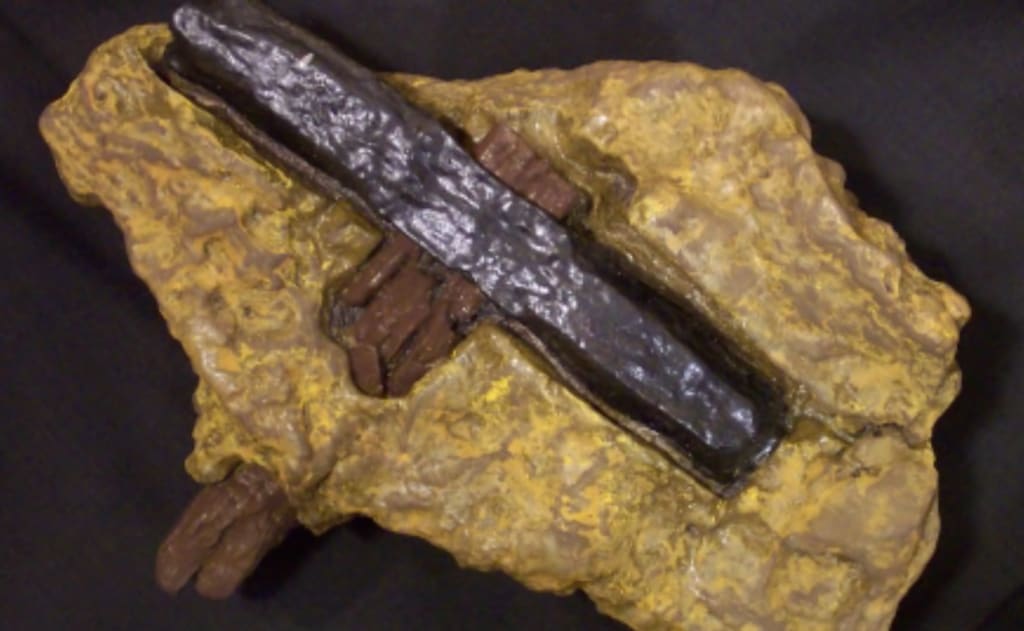5 Mysterious Artifacts No One Can Explain
5 mysterious artifacts

Our understanding of our ancestors and ancient civilizations is derived from historical documents, art, books, artifacts, architecture, and even myths and legends. While we piece together ideas and theories about life thousands of years ago, it's crucial to acknowledge that our knowledge is incomplete. Despite our inclination to feel superior to those who lived in the past, there are aspects of their creations that still elude us. Take, for instance, the mysterious pyramid in China's Qinghai Province, near Mount Baigong—an area historically not known to have had inhabitants. In this region, three caves contain pipes leading to a nearby saltwater lake. The bizarre pipes, varying in size with some smaller than a toothpick, puzzle researchers. The Beijing Institute of Geology estimates that these formations were created approximately 150,000 years ago. The enigma surrounding such ancient structures underscores the gaps in our understanding of the past.
Humans are believed to have inhabited the region for the past thirty thousand years, but the pipe-laying activity, probably unrelated to "ayran" (a playful reference), challenges our understanding. Notably, the pipes are clean and breeze-free, indicating they were not haphazardly inserted into the ground but served a purpose. China's state-run Xinhua news agency reported on these peculiar features, prompting a scientific investigation in 2002. The head of the publicity department of the local Inca government shared that the pipes underwent analysis at a nearby smeltery. Surprisingly, 8% of the material remained unidentified, while the rest comprised ferric oxide, silicon dioxide, and calcium oxide. The latter two components are products of prolonged interaction between the iron and surrounding sandstone, emphasizing the pipes' ancient origin. Engineer Leo Shalin, who conducted the analysis, acknowledged that the results intensified the mystery surrounding the site. Adding to the enigma, Chun Tian, a geology research fellow from the China Geological Survey, further contributes to the intrigue.
The Stone Spheres of Costa Rica, consisting of over 300 polished stone orbs, were first discovered in the 1930s, primarily by workers clearing the jungle. Recognizing these stones as man-made, workers drilled holes into them and used dynamite in an attempt to uncover hidden gold. Ranging in size from a few centimeters to over 2 meters in diameter and weighing up to 16 tons, these spheres were carved between 200 BC and 1600 AD. They have been unearthed in various seemingly random locations. Numerous legends surround these enigmatic spheres, with theories suggesting they originated from Atlantis or were crafted by aliens. Local legends even claim that the native inhabitants possessed a potion capable of softening the rock for carving. The spheres are often discovered in clusters of up to 20 and arranged in geometric patterns, adding to their mystery.
These stone spheres, often arranged in geometric patterns such as triangles, rectangles, or straight lines, frequently align with Earth's magnetic north. Notably, the larger stones exhibit near-perfect shapes with minimal imperfections, suggesting the creators possessed mathematical prowess and advanced knowledge of stone carving techniques and tools. Adding to the mystery, most spheres are crafted from granodiorite, a rock akin to granite. Intriguingly, the granite quarries were located 25 to 30 miles away from the sites with the largest stone spheres, raising questions about how these heavy objects were transported. As for a playful theory, one might entertain the notion that these spheres are stone eggs, potentially hinting at the eventual hatching of stone giants destined to rule the world.
Speaking of giants, a whimsical but intriguing explanation could be that these stone spheres were nothing more than toy marbles for colossal beings to play with.
Now, onto the Roman dodecahedron—a small hollow object crafted from bronze, occasionally stone, featuring 12 flat faces, each forming a Pentagon, a five-sided shape. These artifacts also boast a series of knobs on each corner point of the Pentagons. Discovered in various sizes, ranging from four to 11 centimeters, and dating back to the second and third century AD, these enigmatic objects have surfaced across Europe. Archaeologists have uncovered the majority in regions where the Romans once held sway, particularly in France, Switzerland, and parts of Germany. Despite extensive research, researchers remain baffled about the origin and function of these mysterious Roman dodecahedra, with numerous theories circulating to this day.
These Roman dodecahedra, with their 12 flat faces forming Pentagons and adorned with knobs on each corner, have sparked numerous theories about their purpose. Some suggest they might have served as weapons, candle holders, or even toys. Remarkably, someone even crafted gloves using these mysterious objects. Adding to the intrigue, the renowned Greek historian Futhark identified the dodecahedron as a crucial instrument for zodiac signs, where the 12 sides symbolize the 12 animals in the zodiac circle. However, this theory faces substantial contestation.
Despite the many unanswered questions, one undeniable fact emerges—the Roman dodecahedra were highly valued by their owners. This is evident from their discovery among treasures, including coins and other valuable items. To some observers, these objects resemble ancient wiffle balls, while others see a resemblance to a form of wrench. Perhaps ancient thinkers even distributed them as symbolic tokens of innovative ideas. Now, moving on to the Kimba airplanes, these golden artifacts hold their own mysteries.
Artifacts discovered in Colombia, crafted by the Chimbó civilization between 1000 BC and 1000 AD, measure two to three inches. While some archaeologists interpret them as depicting birds, many others see miniature airplanes in their designs. What makes these airplane models truly remarkable is their aerodynamic accuracy. In 1994, German aerial nautical engineers Peter Belting and Konrad Lubbers constructed large-scale radio-controlled models based on these artifacts. To everyone's surprise, they demonstrated that the designs could fly, utilizing both simple single propeller power and jet power. Notably, mechanical flight was not officially realized until the Wright brothers' achievements in 1903.
Moving on to the London Hammer, the story dates back to June 1936 or 1934, depending on the account. In London, Texas, Max Hunt and his wife Emma stumbled upon a rock with wood protruding from it during a walk. They brought it home and later discovered that it concealed a hammer within. The mysterious origin of the London Hammer continues to spark intrigue and debate among researchers.
Ironically, a hammer was discovered encased in a rock, and upon turning it over to a team of archaeologists, an astonishing revelation emerged. The rock surrounding the hammer dates back to the Ordovician period, over 400 million years ago. Even more mind-boggling, initial measurements suggest that the hammer itself is more than 500 million years old. Its antiquity is so profound that a section of the wooden handle has begun transforming into coal. The hammer's head, consisting of over 96 percent iron, indicates that it is not a naturally occurring creation.
While the possibility of hoaxes lingers, genuine mysteries exist. For me, it seems plausible that in ancient times, there were civilizations similar to ours, possibly even more advanced. However, being advanced doesn't immunize them from potential apocalyptic disasters. It's conceivable that some individuals survived, leading to a restart of civilization. True mysteries persist, awaiting discovery.





Comments
There are no comments for this story
Be the first to respond and start the conversation.